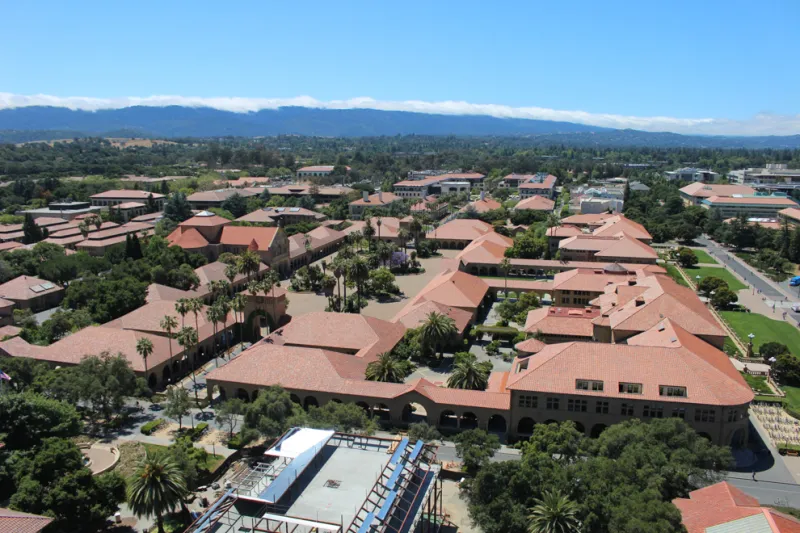Stanford recently announced its vision for campus development through 2035, a plan that would add nearly 2.3 million square feet of new academic buildings and up to 3,150 new units of housing.
The plan was outlined in Stanford’s application for a new land use agreement called the General Use Permit (GUP), which the University submitted to Santa Clara County last week. Between 2018 and 2035, campus development is set to increase by 20 percent, at a rate of about 1.2 percent per year.
This GUP represents an expansion on the same scale as Stanford’s development since 2000, when the University last went through the permitting process. The 2000 GUP approved 2 million square feet for development, and Stanford has since developed 1.5 million square feet of that space, prompting the University’s recent application. If approved, plans for expansion will commence in 2018.
According to a plan overview released by the University, Stanford will focus on developing central campus more intensely while completing construction authorized by the 2000 GUP.
The expansion would address Stanford’s increasing need for student, faculty and staff housing on campus.
“The availability and affordability of housing is a critical challenge for the University,” wrote Jean McCown, associate vice president of government and community relations, over email. “Stanford has been a residential community from the beginning, believing that providing on-campus housing helps connect students and faculty to the academic life of the University. To continue attracting and retaining faculty, particularly in a challenging housing market beyond the campus, the University believes it needs to continue making progress in providing on-campus housing.”
Much of the increase in housing would take place in East Campus, where 1,600 student beds would be added. In addition, the University plans to add about 800 beds in the area around Lake Lagunita, as well as 550 beds around Quarry Road. Central campus is slated to get another 200 beds.
Some of the new student housing reflects anticipated growth in the undergraduate student body by about 100 students a year until 2035 — a total increase of almost 1,700. Administrators began to discuss increasing undergraduate enrollment in 2007, but the plans outlined in Stanford’s latest GUP represent a clear move toward implementing the change.
Meanwhile, new academic facilities are necessary to accommodate the emergence of new academic disciplines as well as innovation in existing ones, according to McCown. She said the University will proceed with development after considering what research facilities will be needed for fields such as stem cell research and neuroscience as they continue to progress.
The proposal also includes 40,000 square feet of new childcare facilities on campus as well as a parking supply reserve that, in the interest of cutting commutes, the University will not build unless it needs to.
Stanford’s new plan for development avoids using the University’s 2,000 acres of open space in the foothills and the Arboretum, preserving many historic faculty homes as well as the trail dubbed “The Dish.”
The foothills have long been a contentious area on the Peninsula. In 2000, the Committee for Green Foothills (CGF) and other groups including the Stanford Open Space Alliance successfully pushed for a GUP that created an “Academic Growth Boundary” requiring further University development to be concentrated in central campus.
Overarching aspects of development, such as square footage, are defined in Stanford’s application for GUP and by the Stanford Community Plan, a set of policies created in 2000 to guide future Stanford development. However, the University retains license over the types and locations of academic and housing facilities developed over time.
In addition, Stanford aims to continue implementing the existing policies of the Community Plan, which includes a goal to keep commuter traffic at current levels. To keep traffic down even as housing increases, Stanford may expand its transit subsidies and its shuttle service outside campus. The University will also continue to provide affordable on-campus options that meet Santa Clara County’s Regional Housing Needs Assessment.
In submitting the application, Stanford begins a long process of review by Santa Clara County, which will assess the environmental and community impacts that the development may have before ultimately making its decision. The University will hold a Community Forum on Jan. 25, 2017 at Palo Alto’s Mitchell Park Community Center.
Contact Cindy Kuang at ckuang ‘at’ stanford.edu.
